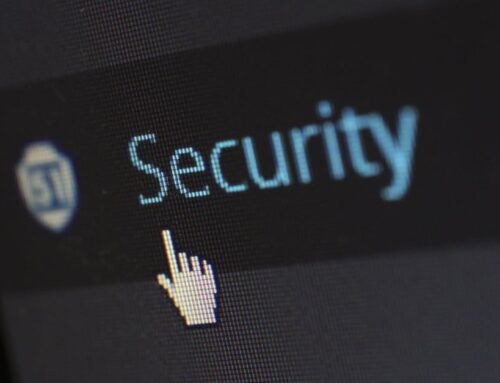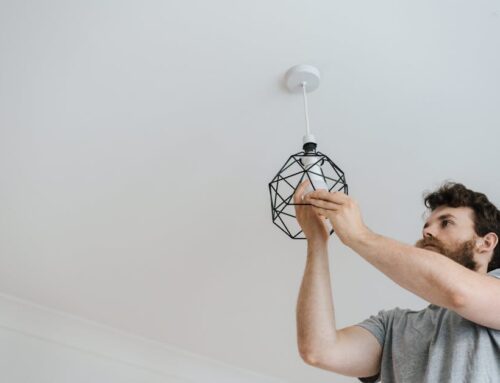Introduction to Home Security in San Antonio
San Antonio, a vibrant and growing city in Texas, has seen a rise in the need for robust home security systems. The city’s unique blend of historic sites and modern development presents a distinct challenge to both traditional and smart home security systems. This chapter provides an overview of the current state of home security in San Antonio, highlighting the importance of securing residential properties.
According to data from the San Antonio Police Department, there were approximately 20,000 reported cases of property crimes in San Antonio in 2022. This categorizes the city as having a ‘high’ property crime rate when compared to the national average. Given these statistics, residents are increasingly aware of the risks posed to their homes and are looking for effective ways to protect their properties and loved ones.
Home security systems, both traditional and smart, aim to deter potential intruders, detect unauthorized access, and provide peace of mind to residents. San Antonio’s diverse neighborhoods vary widely in terms of density, age of buildings, and socio-economic factors, which can influence the choice of security systems for each household.
Types of Crimes
When assessing the need for home security, it’s crucial to consider the various types of crimes that commonly occur in residential areas. These typically include:
- Burglary
- Theft
- Vandalism
The following table provides a snapshot of crime statistics in San Antonio compared to national averages:
| Type of Crime | San Antonio (per 100,000 people) | National Average (per 100,000 people) |
|---|---|---|
| Burglary | 669 | 378 |
| Theft | 2,707 | 2,042 |
| Vandalism | 788 | 743 |
Each resident needs to consider their neighborhood’s specific risks when choosing between traditional and smart home security systems. As crime rates fluctuate, so do residents’ needs and preferences for security features.
In summary, securing homes in San Antonio is a critical concern for many residents. The decision between traditional and smart home security hinges on understanding local crime data, technological advancements, and personal circumstances. The subsequent chapters will delve deeper into the specifics of each system type, comparing their safety, efficiency, and cost implications.
Overview of Traditional Security Systems
Traditional security systems have been the cornerstone of residential safety for decades. These systems typically include a network of sensors, alarms, and occasionally, surveillance cameras. They are primarily designed to detect unauthorized entry and alert the homeowner or a monitoring service that can notify emergency responders.
One common component of a traditional security system is the intrusion detection sensor. These sensors are often placed on doors and windows to detect when they are opened. When a door or window is breached, the sensor trips and sends a signal to the central control panel, which in turn triggers an alarm.
Another frequent feature is the motion detector. These devices use various technologies such as infrared or microwave sensors to detect movement in specific areas of the home. Once motion is detected, the system can alert the homeowner or trigger a security response.
Monitored alarm systems are also integral to traditional setups. These systems connect to a monitoring center that operates 24/7. When an alarm is triggered, the monitoring center can quickly verify the validity of the alert and, if necessary, dispatch emergency services. This additional layer of security can offer peace of mind, knowing that professionals are managing the system’s response.
- Wired Systems: These require physical connections between components, often making them more reliable but less flexible in terms of installation and configuration.
- Wireless Systems: These offer greater flexibility and ease of installation but may be susceptible to interference and hacking if not properly secured.
- CCTV Systems: Closed-circuit television systems are commonly used for recording and monitoring activities in and around the property, providing visual evidence if an incident occurs.
In terms of effectiveness, traditional systems have their advantages. They are generally known for their reliability and have a proven track record of successfully deterring break-ins and aiding in the quick notification of local authorities. Moreover, according to statistics from the Federal Bureau of Investigation (FBI), homes with visible security systems are significantly less likely to be targeted by burglars.
Nevertheless, traditional systems do have limitations. They usually require professional installation and may involve substantial upfront costs. Additionally, their functionality might be limited when compared to more modern security solutions. For instance, traditional systems often lack remote access capabilities and the advanced automation features that are increasingly becoming standard in the security industry.
Despite these limitations, traditional security systems remain a popular choice for many San Antonio residents, especially those who prioritize proven reliability and low-maintenance solutions. As the market for home security continues to evolve, it is crucial to consider how these traditional systems stack up against the emerging smart home technologies.
Understanding Smart Home Security
Smart home security refers to the integration of advanced technologies to enhance the overall safety and security of residential properties. This modern approach leverages the Internet of Things (IoT), wireless communication, and cloud computing to offer real-time monitoring, remote access, and automation. Residents of San Antonio, like those in many urban areas, are increasingly adopting these systems due to their unique benefits.
One of the primary components of smart home security is the smart security camera. These devices can stream live video feeds directly to a user’s smartphone, tablet, or computer, enabling real-time monitoring from virtually anywhere in the world. Many models come equipped with motion detection, night vision, and two-way audio, making them highly effective for both deterring and responding to intrusions.
Another essential feature is the smart lock. These allow homeowners to lock and unlock doors remotely, grant temporary access to visitors, and monitor entry logs. Enhanced models include biometric authentication, such as fingerprint scanning, adding an extra layer of security.
Smart sensors also play a crucial role in modern security systems. These include door and window sensors, motion detectors, and environmental sensors that can detect smoke, carbon monoxide, or flooding. When triggered, these sensors can send instant alerts to the homeowner’s mobile device and, if integrated with a professional monitoring service, notify emergency responders.
One significant advantage of smart home security systems is their integration capabilities. They can be seamlessly connected to other smart home devices, such as smart lighting, thermostats, and voice assistants like Amazon Alexa or Google Assistant. This allows for creating complex automation routines, such as turning on lights and locking doors with a simple voice command or automatically adjusting settings when the homeowner leaves or arrives.
Remote access and real-time alerts are central to the effectiveness of smart home security. Users receive immediate notifications of any suspicious activity or potential security breaches, allowing for quick action. Additionally, many systems offer customizable alert settings to reduce false alarms, ensuring that only pertinent notifications are received.
While smart home security systems offer advanced features and conveniences, they are not without challenges. They rely heavily on a stable internet connection, and any disruptions can impact performance. Cybersecurity is also a concern, as the increasing number of connected devices presents more potential entry points for hackers. Industry experts recommend regular software updates, strong passwords, and using encrypted communication protocols to mitigate these risks.
Overall, the implementation of smart home security systems provides a modern, tech-savvy approach to safeguarding homes. Their ability to offer robust, real-time security solutions makes them an appealing option for residents of San Antonio who are looking to enhance their home protection in an increasingly digital world.
Comparative Analysis Based on Safety and Efficiency
When examining home security solutions, it is essential to analyze how traditional security systems and smart home security compare in terms of safety and efficiency. This comparative analysis will assess various aspects such as response times, reliability, user control, and adaptability to threats.
Response Time
Traditional security systems often rely on passive alarms that must be triggered by events, such as a window being broken or a door forced open. Once triggered, these systems typically notify a central monitoring station, which then contacts the homeowner and emergency services if necessary. This process can sometimes lead to delays in response.
By contrast, smart home security systems generally offer quicker response times due to real-time alerts sent directly to the homeowner’s smartphone or other devices. Many smart systems also offer features such as live video feeds that allow homeowners to assess the situation immediately and take action faster, either by contacting law enforcement or addressing the alert themselves.
Reliability
Reliability is crucial for any security system. Traditional systems tend to have fewer moving parts and depend on hardwired connections, making them less susceptible to hacking but more vulnerable to physical tampering. Regular maintenance and checks are required to ensure the system remains functional.
Smart home security systems, on the other hand, are heavily dependent on internet connectivity and can be subject to cyber threats. However, they often include multiple layers of protection such as encryption, and the ability to update firmware regularly to patch vulnerabilities. Moreover, many smart systems have battery backups to keep them functional during power outages.
User Control
Traditional security systems offer limited user interaction, typically controlled through a keypad located at the entry points of the home. While effective for basic operations, these systems lack flexibility and remote access capabilities.
Smart systems provide extensive user control through mobile apps, which allow homeowners to arm/disarm the system, view live feeds, and receive notifications regardless of their location. This level of control can enhance a homeowner’s ability to manage their security actively and efficiently.
Adaptability to Threats
A key difference between the two types of systems is their ability to adapt to evolving threats. Traditional systems are generally static once installed and may require manual upgrades or replacements to keep pace with new security challenges.
In contrast, smart home security systems are often designed to be highly adaptable. They can integrate with other smart devices, incorporate new technologies through firmware updates, and are customizable to address specific vulnerabilities. Features like facial recognition, AI-powered learning, and integration with other smart home devices enable sophisticated threat detection and response.
In summary, both traditional and smart home security systems offer significant advantages and drawbacks regarding safety and efficiency. The choice between the two should be guided by the specific needs and circumstances of San Antonio residents, considering factors like response times, reliability, user control, and adaptability to threats.
Cost Implications and Economic Impact
When considering the implementation of home security systems, one critical factor is the cost implications and economic impact on the residents of San Antonio. Understanding the financial aspects can help homeowners make informed decisions that align with their budget while ensuring optimal security.
Initial Investment
The initial investment for both traditional and smart home security systems varies significantly. Traditional systems generally require purchasing hardware such as alarms, sensors, and control panels. According to market data, the initial cost for a traditional security system can range between $300 and $1,000, depending on the complexity and number of components.
In contrast, smart home security systems often come with higher upfront costs due to their advanced technology. For example, a comprehensive smart home security package, including cameras, smart locks, and connectivity hubs, can range from $500 to $2,000. This cost may include installation fees if professional setup is required.
Monthly Monitoring Fees
Monthly monitoring fees also differ between the two types of systems. Traditional security companies may charge between $20 and $50 per month for professional monitoring services, which usually includes 24/7 surveillance and emergency response.
Smart home security systems often offer more flexible monitoring options. Homeowners may choose to self-monitor via mobile apps at no additional cost, or subscribe to professional monitoring services for fees that range from $10 to $30 per month. This flexibility can allow residents to tailor their security expenses according to their financial situation.
Maintenance and Upgrades
Maintenance and upgrade costs are additional factors to consider. Traditional security systems might require periodic servicing and potential hardware replacements over time, which can incur additional expenses.
Smart home security systems, while generally more expensive to upgrade due to the nature of the advanced technology, benefit from over-the-air firmware updates and remote diagnostics. This can reduce the frequency of costly hardware replacements and maintenance visits, potentially lowering long-term costs.
Economic Impact
The economic impact of choosing a security system extends beyond individual costs. For the San Antonio community, the adoption of advanced security technologies may contribute to a reduction in crime rates, influence property values, and stimulate local tech markets.
A report from the Federal Bureau of Investigation (FBI) indicated that homes with visible security systems are less likely to be targeted by burglars. Thus, widespread adoption of either traditional or smart home security systems could potentially enhance overall community safety, indirectly boosting the local economy by attracting residents and businesses to safer neighborhoods.
Conclusion
Ultimately, the cost implications and economic impact of home security systems are multifaceted. While smart home security systems may demand higher initial investments, their potential for cost-saving in long-term maintenance and flexibility in monitoring fees can offer financial benefits. Traditional systems, on the other hand, provide reliability and may be more suitable for those seeking more straightforward, potentially lower-cost solutions. San Antonio residents must weigh these considerations carefully to select the system that best meets their financial and security needs.
Future Trends and Recommendations
The landscape of home security in San Antonio is continually evolving, shaped by technological advancements and changing consumer needs. As traditional and smart home security systems vie for residents’ attention, several future trends are poised to influence the security landscape.
One significant trend is the integration of artificial intelligence (AI) and machine learning. These technologies enhance the capabilities of smart security systems, enabling more accurate threat detection and reducing false alarms. AI-powered security cameras, for instance, can differentiate between humans, animals, and inanimate objects, thus mitigating unnecessary alerts and improving response times.
Another trend is the rise of the Internet of Things (IoT). IoT devices connected to a home’s security network offer seamless control and monitoring. As IoT adoption grows, more homes in San Antonio are likely to feature interconnected devices that provide real-time updates and remote management options for homeowners, enhancing both convenience and security.
Cybersecurity remains a critical concern as smart home devices become more prevalent. Future developments will likely focus on strengthening protection against hacking and cyber threats. Encryption protocols, secure authentication methods, and regular software updates are essential to safeguard homeowners’ private information and ensure the integrity of their security systems.
Moreover, the concept of smart neighborhoods is gaining traction. Communities may implement integrated security solutions that link individual home systems to a central hub, allowing collaborative monitoring and swift action in case of emergencies. This interconnected approach can foster safer neighborhoods and improve collective security.
San Antonio’s climate and environment also play a role in shaping future security trends. Weather-resistant devices and systems designed to withstand extreme temperatures and conditions are becoming more common. These innovations ensure reliable performance regardless of environmental challenges.
The table below summarizes potential future trends in home security:
| Trend | Description |
|---|---|
| AI and Machine Learning | Improved threat detection and reduced false alarms through AI-powered devices. |
| Internet of Things (IoT) | Seamless control and real-time monitoring of security devices via interconnected IoT technology. |
| Enhanced Cybersecurity | Stronger protection against hacking with advanced encryption and secure authentication methods. |
| Smart Neighborhoods | Community-wide integrated security solutions for collaborative monitoring and emergency response. |
| Weather-Resistant Devices | Devices designed to perform reliably under San Antonio’s climate conditions and environmental challenges. |
In conclusion, the future of home security in San Antonio will likely be shaped by advancements in technology and a focus on holistic, community-based solutions. Residents should stay informed about these emerging trends to make educated decisions that best fit their security needs.











